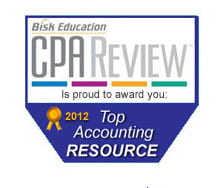How Ted Weschler Turned $70,000 into $264 Million in a Retirement Account
In a column by Allan Sloan in the Washington Post:
Even so, Weschler managed to keep a pretty low profile until his name turned up in a ProPublica story that showed how zillionaire Peter Thiel, one of PayPal’s founders, had amassed a $5 billion account in a tax-sheltered Roth individual retirement account, a program intended to help people of modest needs.
ProPublica revealed that Thiel’s Roth had profited immensely by buying PayPal founders’ stock in 1999 at 0.1 cent a share — which by my math was less than 1/20,000th of what eBay paid for PayPal three years later. Thiel’s special deal was not available to the general public.
By reading the ProPublica story, parsing Weschler’s email and doing about 15 minutes of research, I realized that unless my calculator was having a meltdown, his IRA had outperformed Berkshire stock by about 120 to 1 from 1989 through 2012, and by almost 90 to 1 from 1989 through 2018.
His IRA outperformed Vanguard’s low-cost S&P 500 index fund, a standard investment benchmark, by even wider margins.
I wanted to know how on earth Weschler had done what he did. So, I sent him a brief email telling him that I wanted to understand how he’d made all that money.
Much to my surprise, Weschler responded quickly and positively.
It quickly became clear that Weschler wanted to show that even though his initial IRA stake grew more than 300,000 percent from 1989 to 2018, unlike Peter Thiel he hadn’t played any insider games by having his IRA pay mega-cheap prices for securities that regular people couldn’t buy.
Weschler said he had put up his numbers by investing in only publicly available securities.
I also realized that Weschler wanted to encourage young people to do what he did to accumulate his nine-digit net worth: save and invest, early and often, and take advantage of any retirement account benefits offered by their employer.
“In a perfect world, nobody would know about this account,” he said. “But now that the number is out there, I’m hopeful that some good can come of it by serving as a motivation for new workforce entrants to start saving and investing early.”
Normally, you never see investors’ private numbers, such as the size of Weschler’s account when he converted his regular IRA to a Roth IRA in 2012 or the size of his Roth at year-end 2018, the last date for which ProPublica had data. (Weschler declined to update his IRA numbers or to discuss how the money he’s managed for Berkshire has performed).
Weschler has put up his amazing numbers despite suffering a 52 percent loss in his IRA in 1990, which makes his record even more impressive.
What happened? To give you the short version, he had a trading profit early in 1990 but then watched his fund’s holdings — Continental Health Affiliates stock and Intelogic Trace bonds — end the year down 67 and 55 percent, respectively, from what he paid for them.
Weschler said that he kept swinging for the fences despite that whopping loss because, “One of my personal investment mantras is that there’s no such thing as a loss, it’s just an unmonetized lesson.”
Weschler converted what had become a nine-digit IRA into a Roth in 2012, even though that required him to pay $29 million of federal income tax (which he did by reaching into other accounts to come up with the necessary cash).
Here’s why he did the conversion. With a regular IRA, the money going in is tax-deductible, but withdrawals are taxable. And you have to start taking annual withdrawals when you turn 72. With a Roth, the money going in isn’t deductible, but the withdrawals aren’t taxable.
So, if you think — as Wechsler did — that you can save enough on future taxes to justify paying taxes today, it makes sense to convert a regular IRA to a Roth. Provided, of course, that you’ve got enough money to cover the tax bill.
Such transactions weren’t available to high-income people like Weschler until 2010 when legislation (intended in part to pay for prolonging some of President George W. Bush’s tax cuts) waived the income limits on IRA- to- Roth conversions.
“Although I have been an enormous beneficiary of the IRA mechanism, I personally do not feel the tax shield afforded me by my IRA is necessarily good tax policy,” he wrote. “To this end, I am openly supportive of modifying the benefit afforded to retirement accounts once they exceed a certain threshold.”
How does someone like Weschler, the youngest of five children in a family of modest means in Erie, Pa. get to have the kind of money that he’s got?
And how does he get to have a job that lets him sit at Buffett’s right hand?
Let’s begin at the beginning.
Weschler started as a junior employee at W.R. Grace, a New York City-based conglomerate, in 1983 after he graduated from the University of Pennsylvania.
He began maxing out his contributions to the Grace 401(k) plan a year after he joined, when he was first allowed to participate. By the time he left in late 1989, his account was up to $70,384. (Of this, $34,353 was his contribution, $12,328 was Grace matching money, the rest was from investment gains).
By year-end 2018, that $70,384 had grown to $221.6 million. The Grace money had grown to more than $58 million by year-end 2018, about 26 percent of the $221.6 million portion of his IRA that’s attributable to his days at Grace. The other $42.8 million in his Roth came from accounts he set up after leaving Grace.
In 1990, Weschler left New York and relocated to Charlottesville to start a leveraged buyout fund with Grace vice chairman Terry Daniels, who was also leaving the company.
After about 10 years with Daniels, Weschler went off on his own to start what turned out to be a very successful hedge fund. He said that it produced more than 22 percent of after-fee compounded annual returns for investors during its run, from Jan. 14, 2000 through Dec. 9, 2011. A terrific record.
In 2010, Weschler, a long time Buffett admirer, entered and won the annual auction run by the Glide Memorial Church of San Francisco to have a lunch with Buffett by making a $2,626,311 donation. He also won the 2011 auction by bidding $100 more.
Rather than join Buffett for high-profile lunches in New York City, Weschler flew to Buffett’s hometown of Omaha to dine at a since-closed steakhouse called Picolo’s.
Because Weschler’s family wanted to stay in Charlottesville, he bought a condo near Berkshire’s headquarters and regularly flies to Omaha (on flights by NetJets, a Berkshire subsidiary) at his own expense (and with no employee discount) to spend time with Buffett and colleagues.
For Berkshire, he looks for investments that can absorb a minimum of $500 million without giving Berkshire a stake of 10 percent or more.
For his personal investments, he’s got the rest of the universe.
Weschler says that he used to buy beaten-down bonds of companies that were in less dire straits than they seemed to be, and stocks of little-known companies that he determined were in much better shape than the market thought they were.
Although Weschler’s overall IRA returns since 1989 are astronomical, his percentage gains from 2013 through 2018 — since joining Berkshire — are below both Berkshire stock and the Vanguard S&P 500 fund.
“I think it is safe to say that my retirement account got a lot less attention after I joined Berkshire,” Weschler said. “For the prior 22 years, there was a direct overlap between things I was looking at for my day job and potential investment opportunities for my retirement account. Once I joined Berkshire, that simply wasn’t the case.”
Weschler spends a lot of his time reading and thinking, and studying companies and industries to find things that the financial markets don’t seem to be seeing.
“For people who can’t do that, index funds are the answer,” he says.
Even though index funds can’t begin to match Weschler’s long-term performance, they can make you a lot of money if you stick around.
Weschler, extrapolating from numbers that I sent him, said that if you’d put the $70,535 that he had in his IRA at year-end 1989 into Vanguard’s S&P index fund, you’d have had more than $1.6 million as of June 30.
(The exact number, Vanguard confirmed, was $1,636,238.)
“That $1.6 million,” he says, “drives some very simple advice: start early, maximize the (employer) match, invest 100 percent in equities, and ignore all the other noise.”
To which I would add: make sure to pay attention to small details like Weschler’s email to ProPublica. You never know what you can learn by studying a footnote and reaching out to the person who wrote it.





5 Responses
[…] https://blog.umd.edu/davidkass/2021/08/27/how-ted-weschler-turned-70000-into-264-million-in-a-retire… […]
[…] respect to our own portfolios? Well how about we hear directly from the man himself. In a letter to Dr. David Kass, expounding on index funds, Weschler gives 4 action items to the would be long term […]
[…] Ted Weshler Turned $70,000 into $264 Million […]
[…] between the Roth IRA and traditional IRA, partially due to the widely published article about Ted Weschler, investment manager of Berkshire Hathaway, grew his personal Roth IRA many many times o…. Below is quoted from Dr. David Kass’s blog post, link […]
[…] 详情参考 […]